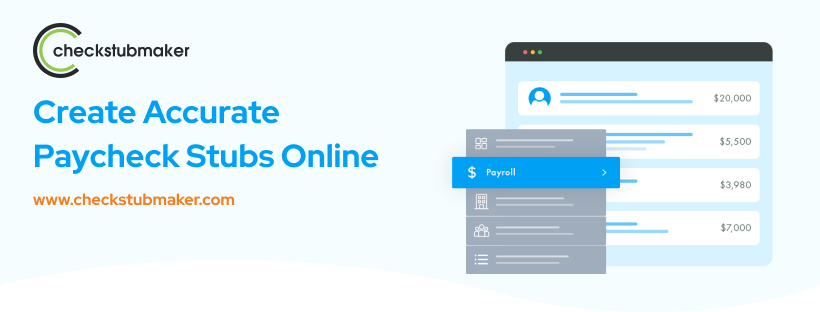Drawing from our experience, this refers to a specific exemption on pay stub that impacts how much income tax an employer withholds from an employee’s paycheck. Essentially, they reduce the taxable earnings, thus lowering the amount of tax owed to the government.
At Check Stub Maker, our pay stub creator simplifies the process of creating detailed pay stubs. This includes allowances, ensuring compliance with tax regulations, and providing clarity for all parties involved.
In this blog post, we’ll explore the process of tax withholding allowances, how they’re calculated, and their impact on your annual wages.
Let’s get started!
What this article covers:
- What Is an Allowance on Your Paystub?
- How Many Allowances Can an Employee Claim?
- How to Calculate Withholdings From Employee Pay
What Is an Allowance on Your Paystub?
What Are Withholding Allowances?
Withholding allowances are exemptions that individuals claim on Form W-4, which is provided to their employer by the IRS. These allowances indicate how much tax to withhold from each paycheck.
Each allowance reduces the amount of income subject to tax withholding, thereby increasing the employee’s take-home pay.
Our findings show that understanding and accurately claiming allowances can significantly impact your tax liability.
Who Can Have Withholding Allowances?
Any employee who earns wages or a salary can claim a withholding allowance, which is contained in their pay stub information. This is true for both traditional employees and freelancers and contractors.
However, eligibility for specific allowances depends on various factors such as:
- marital status
- dependents
- other credits or deductions you may qualify for
It’s essential to evaluate your circumstances and consult with a tax professional like us at Check Stub Maker to determine the appropriate number of allowances to add to your pay stubs.
How Do Withholding Allowances Work?
When an employee claims withholding allowances, they’re essentially adjusting the amount of tax withheld from their paycheck to align with their expected tax liability.
Each allowance reduces the taxable income subject to withholding, resulting in an exemption with less tax being deducted from the paycheck. This can lead to a higher take-home pay for the employee.
However, it’s crucial to strike a balance to avoid underpaying taxes throughout the year and facing penalties during the tax season.
With our pay stub generator, you or your employer can input your withholding allowances accurately, ensuring that your pay stubs consistently reflect the correct tax withholdings.

How Many Allowances Can an Employee Claim?
Based on our first-hand experience, the W-4 typically entitles you to claim a withholding allowance for yourself, a spouse, and any dependents.
When And How Can Employees Change Their Withholding Allowances?
Employees can change their withholding allowances at any time by submitting a new Form W-4 to their employer.
Based on our observations, common life events that may warrant a change in allowances include:
- getting married
- having children
- experiencing significant changes in income
If you’re self-employed, it’s crucial to review your tax situation regularly and adjust your allowances accordingly to ensure accurate tax withholding.
How to Calculate Withholdings From Employee Pay
Calculating withholdings from employee pay involves several steps:
- Determine Gross Pay: Start by calculating the employee’s gross pay, which includes regular wages and any overtime or bonuses they’ve earned.
- Consider Withholding Allowances: Subtract the total withholding allowances claimed by the employee from their gross pay to arrive at the taxable income.
- Apply Tax Rates: Use the employee’s taxable earnings and the appropriate tax brackets to estimate the amount of tax to withhold.
- Factor In Other Deductions: Some examples include Social Security and Medicare taxes, as well as any pre-tax contributions the employee may have, like retirement contributions.
- Calculate Net Pay: Subtract all withholdings and deductions from the gross pay to determine the employee’s net pay, which is the amount they will receive on their paycheck.
At Check Stub Maker, we help employers and entrepreneurs consistently make paystubs that are quick and efficient.
After trying out this product, we discovered that our digital platform makes precise calculations for your pay stub records to accurately estimate your tax obligations.

Conclusion
In this article, we’ve answered the question, ‘What are allowances on paystub?’ by exploring the concept of obtaining withholding allowances in the form of exemptions and how they impact your tax-related deductions.
Understanding withholding allowances is crucial for both employers and employees to ensure accurate tax calculations and compliance with regulations mandated by the IRS.
With our paystub generator, we simplify the process of creating detailed pay stubs, including tax allowances, prioritizing accuracy and convenience.
If you’re ready to take the hassle out of payroll management and tax season in one go, try out Check Stub Maker today!
If you want to learn more, why not check out these articles below:
- Pay Stubs and Bank Statements
- Guaranteed Payment Pay Stub
- How Long Should You Keep Pay Stubs Before Shredding?
- How Long Does It Take for a Job to Send Your Pay Stub?
- How Long From Being Let Go From a Job Do They Keep a Record of Pay Stubs?
- How Long Do You Have to Hold Physical Employee Paystubs?
- Employee Paid Correctly But Pay Stub Shows Incorrect Pay Period
- How Can Employee Correct the Pay Stub If the Employer Ran It Wrong?
- Employer Asking for Pay Stub But I Got Paid in Cash
- How Quickly Do Employees Have to Get Pay Stubs After Pay Date?
- When Showing Your Pay Stubs to an Employer Do You Block Out Any Information?
- Can I View My Paystubs Online After I Am No Longer Employed?
- How Can I View My Pay Stub Before My First Paycheck?
- How Do I Get My Address Changed on My Check Stubs?
- What If Your Employer Doesn’t Give You a Pay Stub?




